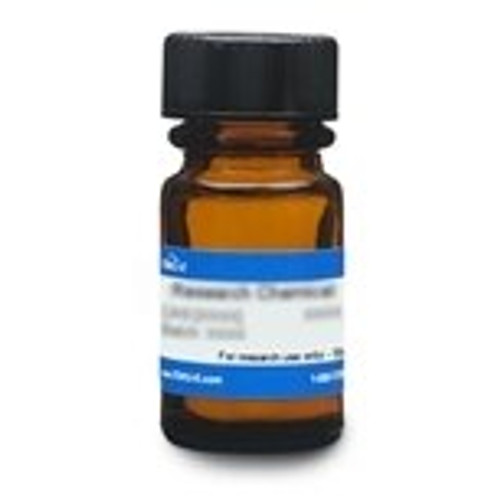Rifampicin Sodium (Rifampin) is a semisynthetic antimicrobial compound with immunosuppressive properties derived from Rifamycin SV and originally developed by the Lepetit group in 1965. Rifampicin shows activity against Gram-positive bacteria, particularly mycobacteria like tuberculosis, some Gram-negative anaerobic bacteria, protozoa, fungi, and poxviruses.
Rifampicin Sodium inhibits the assembly of DNA and protein into mature virus particles. It inhibits initiation of RNA synthesis by binding to β-subunit of RNA polymerase, which results in cell death.
Rifampicin Sodium has been shown to inhibit α-synuclein fibrillation and disaggregate fibrils in a concentration-dependent manner. Rifampicin can activate pregnane X receptor (PXR), which affects cytochrome P450, and the activity of glucuronosyltransferases and P-glycoprotein. Rifampicin has been shown to enhance CYP2C-mediated metabolism, affect compounds that are transported by P-glycoprotein and metabolized by CYP3A4.
We also offer:
- Rifampicin Solution (R041)
| Mechanism of Action | Rifampicin Sodium targets prokaryotic DNA dependent RNA polymerases which prevent subsequent RNA transcription and protein translation. |
| Spectrum |
Rifampicin is a broad-spectrum antibiotic with a wide range of activity including:
|
| Impurity Profile | Rifampicin B: Not more than 0.5% Rifampicin S: Not more than 2.0% Other: Not more than 2.0% |
| Microbiology Applications | Rifampicin Sodium is commonly used in bacterial recombinant protein expression to inhibit bacterial RNA polymerase activity and synthesis of host bacterial proteins. Rifampicin sodium can also be used as a selective agent to isolate Campylobacter jejuni.
|
| Plant Biology Applications | Rifampicin has been tested in Jerusalem artichoke tuber explants by adding 10 to 50 µg/ml to the tissue culture medium. At 50 µg/ml no bacterial infection was detectable, without affecting cell division rates, cytodifferentiation and DNA synthesis (Philips, 1981). Rifampicin is a selective inhibitor of chloroplast RNA polymerase and can be used to study chloroplast-level DNA transcription in plants. |
| Eukaryotic Cell Culture Applications | Rifampicin has been shown to have immunosuppressive effects in mice. There are no immunosuppressive effects in humans when Rifampicin is given in doses at or below clinically recommended levels.
Rifampicin has been shown to inhibit α-synuclein fibrillation and disaggregate fibrils in a concentration-dependent manner. Rifampicin can activate pregnane X receptor (PXR), which affects cytochrome P450, and the activity of glucuronosyltransferases and P-glycoprotein. Rifampicin has been shown to enhance CYP2C-mediated metabolism, affect compounds that are transported by P-glycoprotein and metabolized by CYP3A4. |
| Molecular Formula | C43H58N4NaO12 |
| References |
Philips R, Arnott SM and Kaplan SE (1981). Antibiotics in plant tissue culture: Rifampicin effectively controls bacterial contaminants without affecting the growth of short-term explant cultures of Helianthus tuberosus. Plant Sc. Lett: 21:235-240 |











